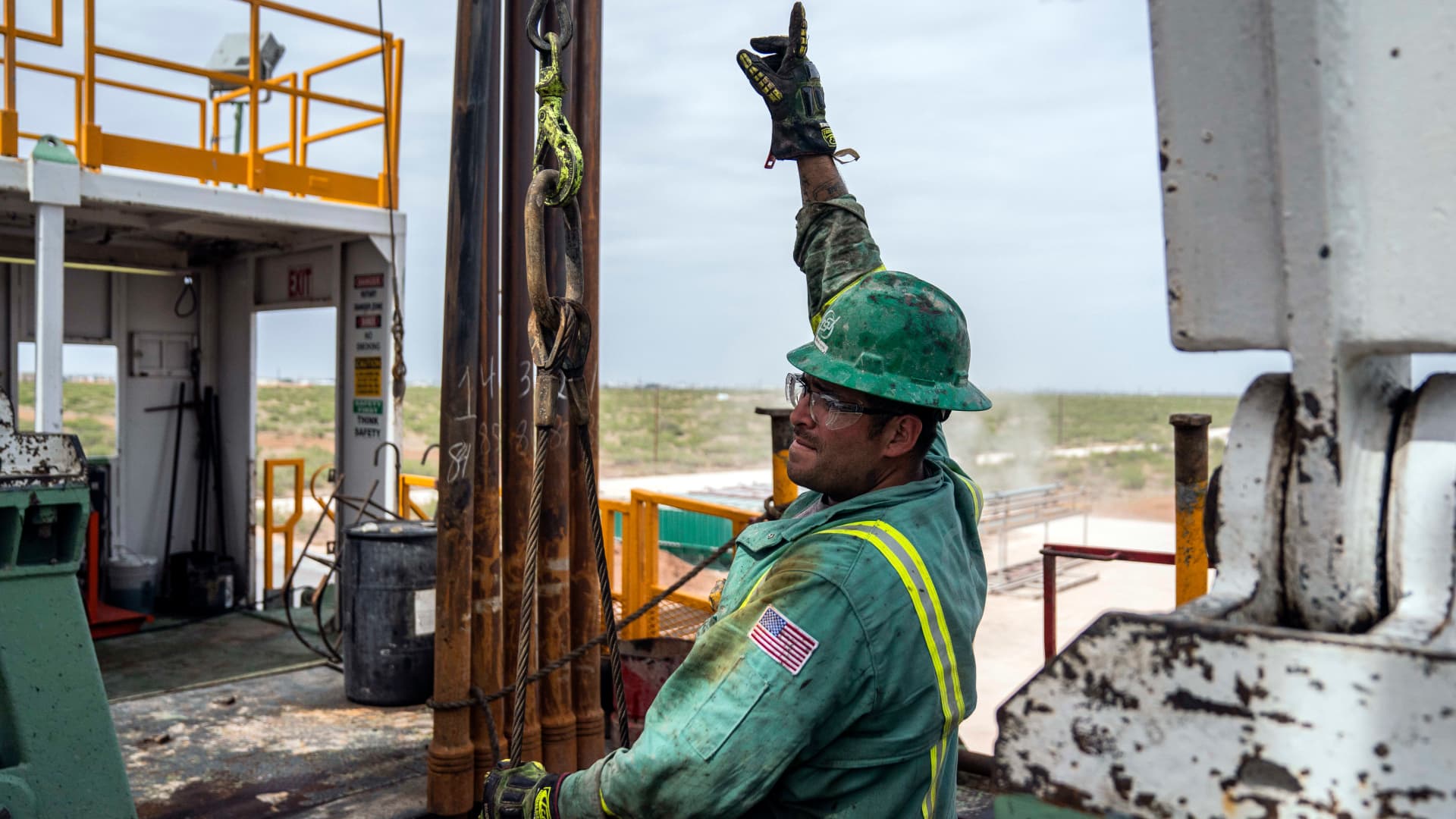
The oil industry is fighting to cash in on limited land in the resource-rich Permian Basin but the acquisition targets are dwindling after a series of major deals over the past four months. Diamondback Energy took one of the last major, privately held operators in the Permian off the table this week when it agreed to buy Endeavor Energy Resources for $26 billion. The deal is poised to catapult Diamondback into the top tier in the Permian, the most prolific oil patch in the U.S. that stretches from western Texas into southeastern New Mexico. Diamondback will have the third highest net production in the Permian behind only the supermajors Exxon Mobil and Chevron, wrote Matthew Bernstein, senior analyst at Rystad Energy, in a Monday evening note. Wall Street has received the deal warmly so far with Diamondback’s stock rising about 9% this week. Truist Securities raised its price target for Diamondback’s stock to $250, implying 51% upside over Tuesday’s close of $165.60. CRFA Research bumped its target to $185, or about 12% upside. “In terms of companies that could really move the needle and put a public company into the upper echelon of inventory holders, there’s frankly no one to the size of Endeavor left,” Bernstein told CNBC, referring to private companies that can still be scooped up. Still, the dealmaking is expected to continue in 2024 as dwindling real estate in the Permian puts pressure on companies to snatch what is still up for grabs. Diamondback’s deal comes after Exxon agreed to buy Pioneer Natural Resources for nearly $60 billion and Occidental entered a deal to purchase CrownRock for $12 billion last year. The top six companies in the Permian are set to own 62% of the basin’s remaining oil reserves, according to Rystad Energy. Chevron has also struck its own megadeal, agreeing to buy Hess for $53 billion in a play that is more focused on production in Guyana. “There’s a limited amount of land in order to do exploration and production, and there’s a limited amount of land that actually has the prospects for oil,” Andy Lipow, president of Lipow Oil Associates, told CNBC. The oil companies are trying to maintain steady shareholder returns for as long as possible, and the way to do that is to have the biggest inventory footprint, said Neal Dingmann, managing director of energy research at Truist Securities. With the big private targets in the Permian largely spoken for, the dealmaking will likely shift to mergers of equals among medium-sized publicly traded producers, energy analysts say. The stubborn holdouts After the Diamondback-Endeavor and Occidental-CrownRock deals, the only other major privately held producers left in the Permian are Continental Resources and Mewbourne Oil. Continental and Mewbourne had a net output of around 486,000 and 272,000 barrels of oil equivalent per day, respectively, in 2023, according to Bernstein. But they are tricky targets with Continental having gone private in 2022 to operate without the demands for capital discipline that publicly traded companies face, Bernstein said. And Mewbourne is a tightly held, family-owned company that has not shown interest in selling, Dingmann said. Publicly traded target opportunities Permian Resources , Civitas , Coterra , Vital Energy , and Ovintiv have spent significant capital in scaling up through acquisitions and could seek to take the next step now that they have reached a formidable size, according to Bernstein. They could look to merge with each other or sell to a larger publicly traded producer, he said. Devon Energy held preliminary talks with Marathon Oil last year on a potential combination, people familiar with the matter told Bloomberg News at the time. “Devon and Marathon makes strategic sense,” said Bernstein. “They are similar in the fact that they have these very large diversified portfolios across the lower 48.” More recently, however, Devon is said to have approached the Canadian producer Enerplus , according to Reuters. Enerplus has a $3.2 billion market cap and operates more in the Bakken Basin in North Dakota. “It’s almost like a free for all,” Jonnathan Handshoe, an analyst with CFRA Research, said of the recent the dealmaking activity. Potential buyers In terms of possible buyers, majors such as Exxon, Chevron and Occidental are currently digesting their big ticket deals. ConocoPhillips , however, has been conspicuously absent from the recent activity, said Bob Yawger, managing director and energy futures strategist of Mizuho Americas. “It might be because they’re hunting bigger game that takes longer to wrap up,” Yawger said. Conoco with its $109 billion market cap would need a big deal to move the needle, he said. Devon, Marathon and Conoco officials weren’t immediately available to comment on their acquisition strategy when CNBC reached out. ConocoPhillips CEO Ryan Lance said during the company’s fourth-quarter earnings call earlier this month that the industry needs consolidation and he expects to see more deals. But Lance has said in the past that Conoco sets a high bar for mergers and acquisitions. Conoco could potentially seek to acquire Permian Resources , Civitas , Coterra, Vital Energy or Ovintiv , Bernstein said. But Yawger said Marathon Oil, or even EOG Resources with its nearly $65 billion market cap, would do more to move Conoco forward. EOG, however, has remained more focused on growing through exploration rather than making big deals, according to Dingmann. Conoco is the only company other than Exxon and Chevron, which are closing major acquisitions, that could finance a deal with EOG, Bernstein said. Still, it would be a major move that is unlikely to happen at this time though nothing can be ruled out, he said. “If they bought EOG, they would be right up there with Exxon just in terms of Permian inventory, and then also hold a higher inventory outside of the basin itself and in the whole lower 48,” Bernstein said. “It wouldn’t be the most outlandish assessment out there.”
